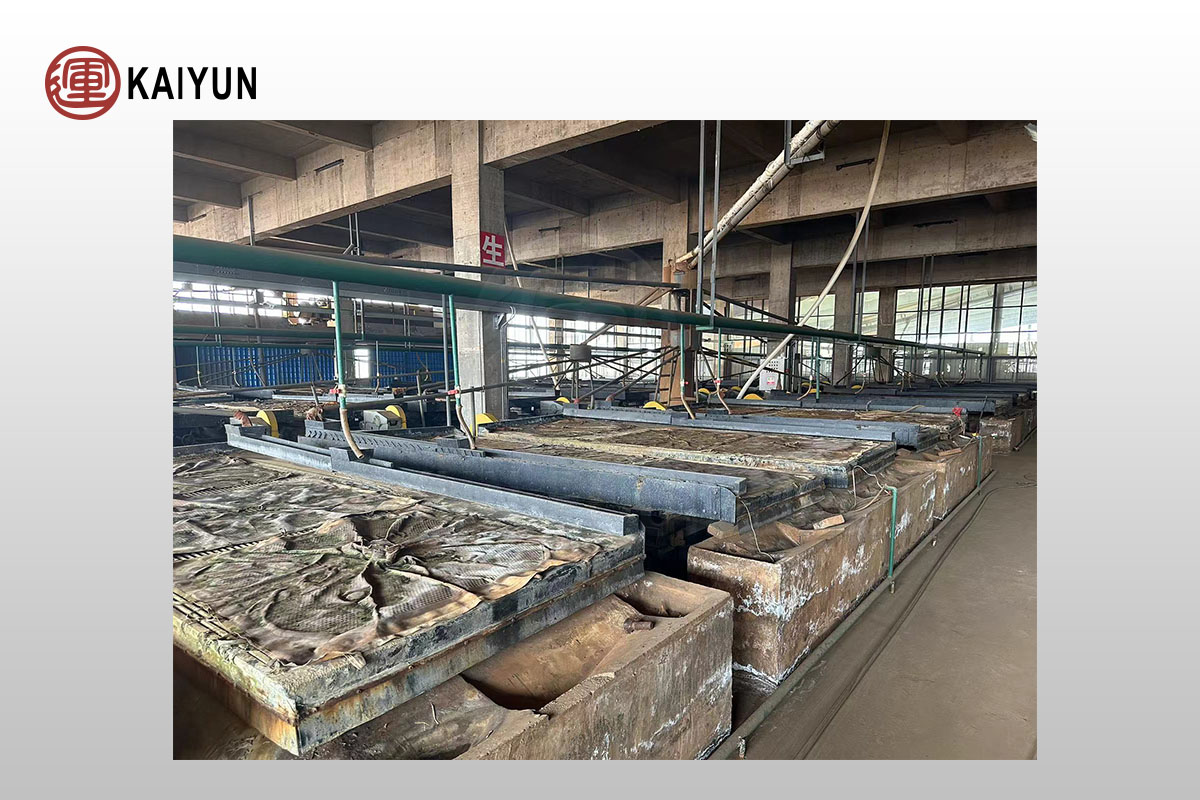
Tin is an important industrial metal with wide applications in electronics, chemical industry, food packaging and national defense due to its low melting point, excellent plasticity, corrosion resistance and non-toxicity. However, natural tin ore usually coexists with a variety of impurity minerals and cannot be directly utilized. In order to effectively extract metallic tin, mineral separation processes such as gravity separation, flotation and magnetic separation are required. These processes can accurately separate valuable tin minerals according to different ore characteristics, while removing impurities to ensure that the concentrate products meet the quality requirements of industrial production.
Tin ore gravity separation process
In my country, placer tin ore accounts for more than 80% of tin ore resources. Since the density of cassiterite is significantly greater than that of paragenetic minerals and gangue, gravity separation has become the preferred process for processing tin ore. Before gravity separation, a multi-stage grinding and sorting strategy is adopted to ensure early dissociation and recovery of cassiterite and avoid excessive crushing. In addition, since fine-grained sludge is commonly found in raw ore (40-60% is below 10 microns), which interferes with mineral processing, pre-selection and desliming operations are required, including sludge dissociation and mud and sand separation, to ensure that the material particle size is suitable Re-selection process.
The gravity separation process achieves separation based on the difference in specific gravity between tin ore and gangue and the different settling speeds in the medium. The re-selection process usually includes rough selection and fine selection. In the roughing stage, a jig is used for pre-selection, and the minerals are stratified according to specific gravity through pulsating water flow to efficiently process coarse and medium-sized tin ores. For fine-grained tin ore, a shaking table is used for selection, relying on asymmetric reciprocating bed motion and water flushing to achieve high-precision separation. It is especially suitable for the recovery of fine-grained cassiterite from cassiterite-quartz ores. Generally speaking, the tin ore gravity separation process can be flexibly adjusted according to the characteristics of different ores to ensure efficient recovery of tin resources.
Tin ore flotation process
When the particle size of cassiterite is refined to below 19 μm, the gravity separation efficiency will be limited, and flotation becomes the preferred option at this time. During the flotation process, select appropriate collectors, adjust the pH of the slurry, and suppress associated minerals. Commonly used collectors include oleic acid, toluene acid and salicyl hydroxamic acid, while regulators such as sodium hydroxide, sodium carbonate and sulfuric acid can effectively improve the flotation effect. By controlling the pH value and selectively adding inhibitors, such as water glass and sodium hexametaphosphate, the concentrate grade and recovery rate of cassiterite flotation can be significantly improved.
Effective separation can be achieved by using flocculation and carrier flotation processes. Flocculation and flotation add selective flocculants to form floccules of the target minerals, thereby separating them from the gangue minerals; carrier flotation uses other minerals as carriers to float fine-grained tin ore together with the carrier, thereby achieving recovery. In addition, shear-flocculation flotation uses the shear force generated by strong stirring and the collector to form hydrophobic bonding forces on the surface of the mineral particles, promoting the formation of flocculation of fine mineral particles, and can also effectively separate and recover tin ore.
For tin ores with uneven particle sizes, it is recommended to use a gravity separation-flotation combined process, supplemented by a “flotation first and then gravity separation” process for fine-grained ores to optimize mineral processing indicators.
Tin ore magnetic separation process
Tin ore is often accompanied by complex symbiotic minerals such as iron oxide minerals (such as magnetite, hematite, limonite) and tungsten ore, which makes flotation and gravity separation unable to achieve ideal separation results. Therefore, magnetic separation technology has become an essential mineral processing method.
According to the properties of different tin ores, there are different choices for magnetic separation processes. If the associated mineral is tungsten ore, a dry magnetic separation process can be used to separate wolframite, scheelite and cassiterite, and then electroseparation can be used to further separate cassiterite and scheelite. If the associated mineral is iron oxide, the wet strong magnetic separation process is used. This process is widely used in the pretreatment of raw ore, sub-concentrate and concentrate, aiming to achieve effective separation of tin ore and iron ore.
As an important step before separation, magnetic separation can divide the ores into magnetic minerals and non-magnetic minerals, and enter the subsequent gravity separation process respectively. The processing of the non-magnetic part is relatively simple, with high recovery rate and concentrate grade; the processing of the magnetic part is more complicated, and usually produces rich ore with medium ore or poor with medium ore. The secondary concentrate has a higher iron mineral content and the magnetic separation effect is more significant. Although magnetic separation of concentrate strives to separate cassiterite and iron minerals individually, in order to balance the risk of over-crushing of cassiterite, iron minerals are usually allowed to enter the concentrate together with cassiterite in actual operations to reduce the degree of crushing of cassiterite.
Summary
Through the three beneficiation processes of gravity separation, flotation and magnetic separation, valuable minerals in tin ore can be effectively separated, impurities can be removed, and the recovery rate and concentrate grade of tin ore can be improved. These processes can be flexibly adjusted according to the characteristics of the ore to ensure the maximum utilization of tin ore resources and provide efficient extraction solutions for the tin industry.